In his preface to his commentary on the book of Hosea, St. Jerome, one of the greatest Biblical scholars of his time (5th century C.E.), wrote desperately,
If, in the exposition of all the prophets, we need the Holy Spirit’s intervention in order that — by whose inspiration they were written — they may be explained through... Read More...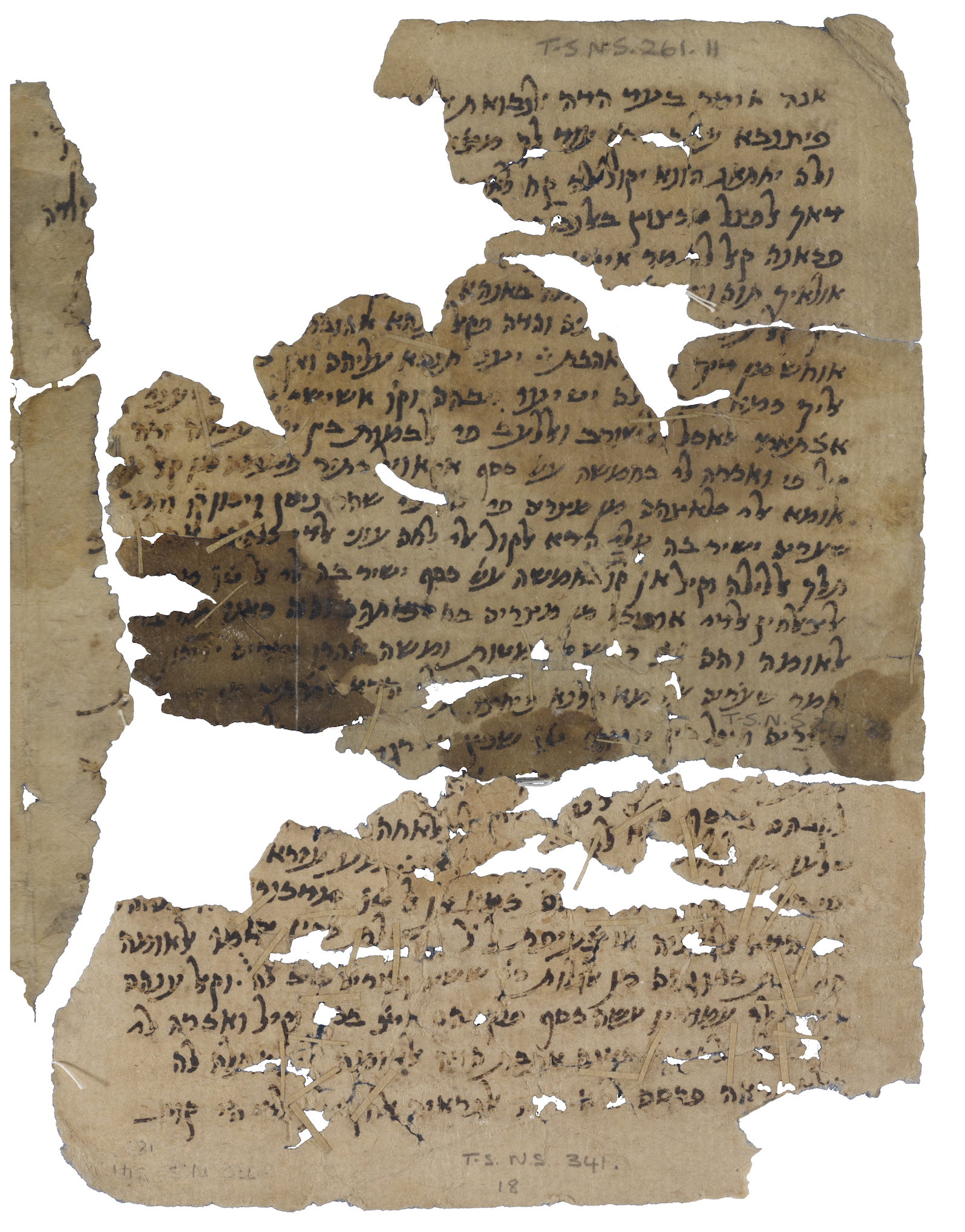
Has tags: Bible, Book, commentary, Genizah Fragments, Karaite
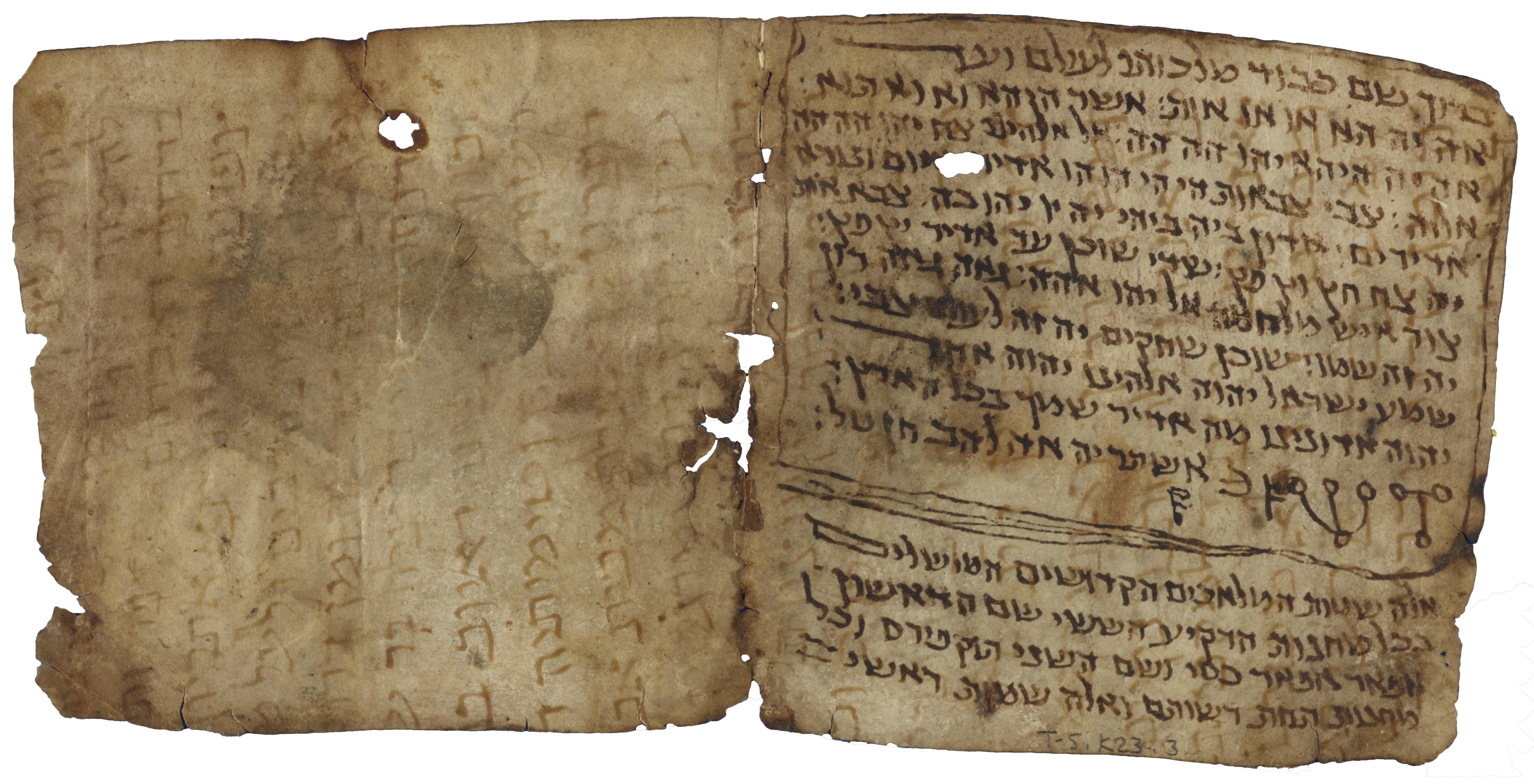
Our Throwback Thursday this week is taken from issues 8 and 9 of the printed edition of Genizah Fragments, published in October 1984 and April 1985, by Shaul Shaked:
Among their varied treasures, the Cairo Genizah collections contain valuable materials for the study of a number of fields of Jewish and general interest for which they have, until now, hardly been used at all. Among these fields are Judaeo-Persian texts and magic fragments and it was to... Read More...Has tags: Genizah Fragments, Karaite, magic, mystical, palimpsest, Persian
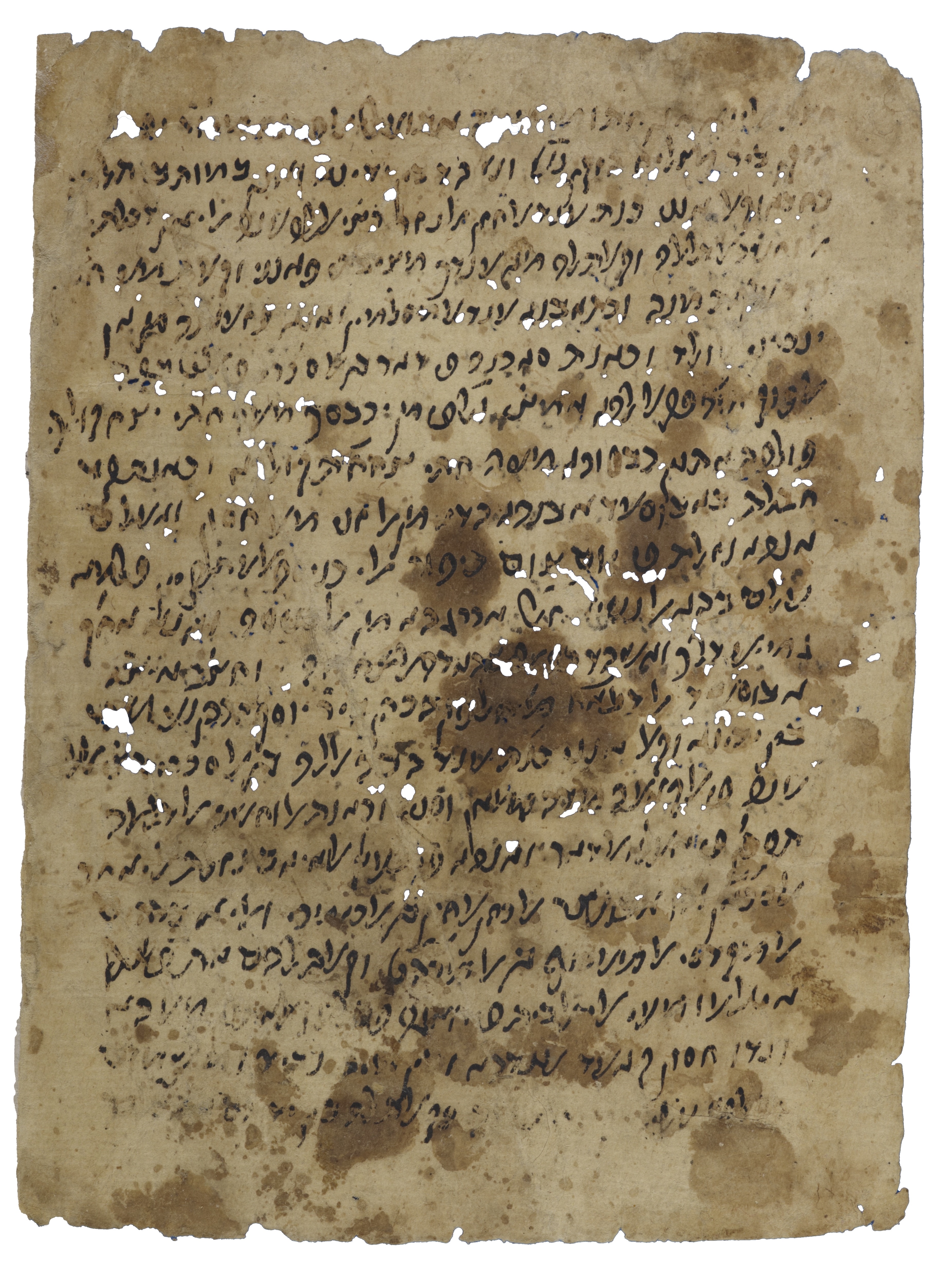
At sundown today, Yom Kippur – the Jewish Day of Atonement – begins. It’s a day for fasting, repentance, and forgiveness. And over 900 years ago it was a day to teach a wealthy woman a lesson through public humiliation. Part of T-S 10J7.10 is a deposition to the court about Karima daughter of ‘Ammar, known to all as al-Wuhsha ‘the broker’. Documents in the Genizah have recorded the commercial and private affairs of al-Wuhsha, including her love affair with a married man, Hassun from Ashkelon, which...
Read More...Has tags: al-Wuhsha, Genizah Fragments, Goitein, legal, Yom Kippur
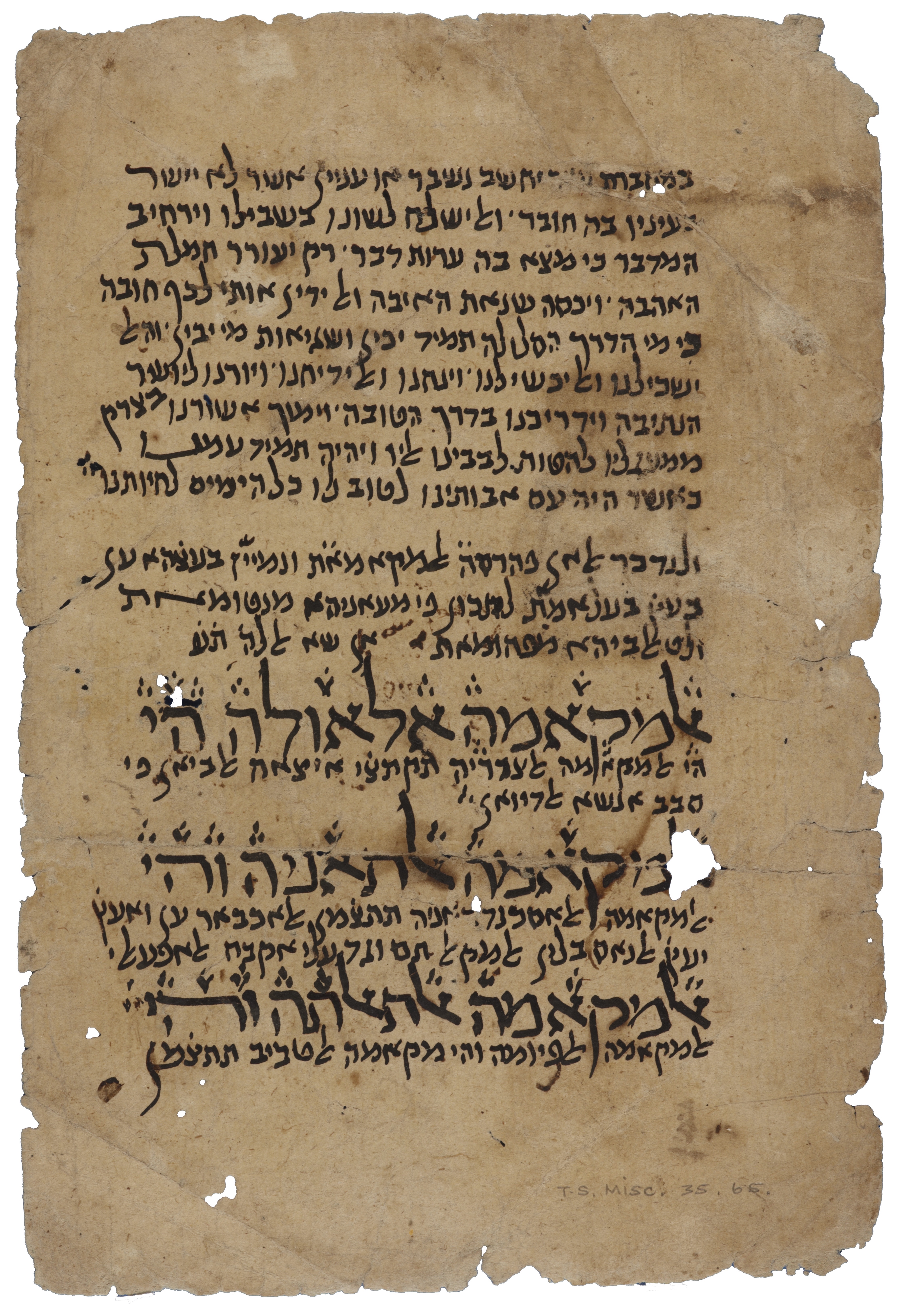
Michael, what are you working on at the moment?
I’ve recently finished a book (Studies in the Medieval Hebrew Tradition of the Ḥarīrīan and Ḥarizian Maqama) on what, for lack of a better word, we can call the “classical” maqama. A maqama is a rhymed-prose narrative into which poems are inserted. The sorts of maqamas on which I am working are called picaresque maqamas, as they involve the adventures of a narrator and a hero. Picaresque maqamas went into the makeup of...
Read More...Has tags: Arabic, Genizah Fragments, literature, mamluk, poetry, Q&A, theatre
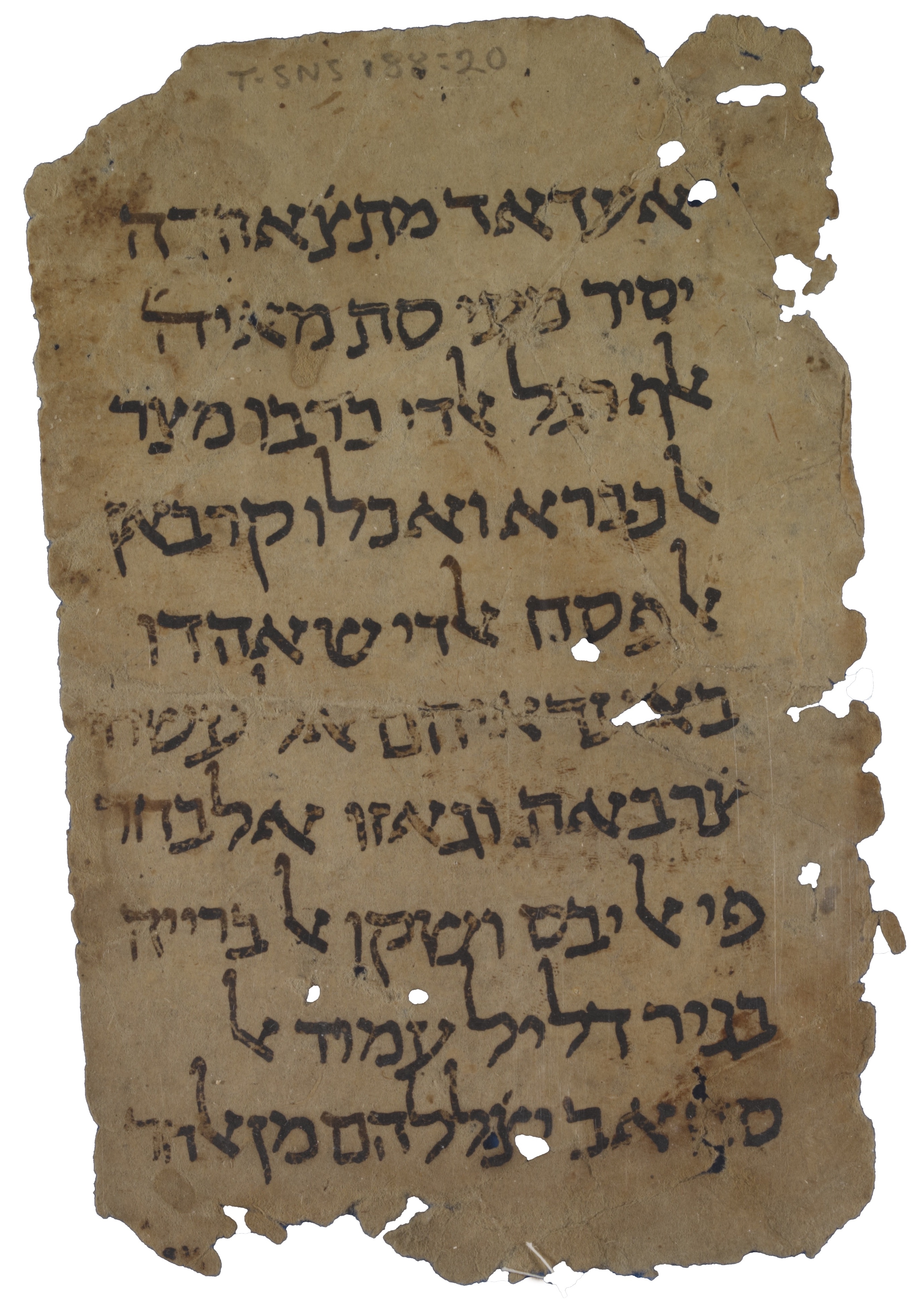
Our Throwback Thursday this week is taken from issue 40 of the printed edition of Genizah Fragments, published in October 2000, by our late colleague Friedrich Niessen:
A passage in II Samuel 10:15–19 deals with David’s campaign against the Aramean king, Hadadezer, and Shovakh, the commander of his army. This is the only context in which the name Shovakh appears in the Bible in such a form. A different person with the same name occurs in a traditional Jewish legend, which relates that after the conquest of... Read More...Has tags: Bible, chronicle, Genizah Fragments, Samaritan
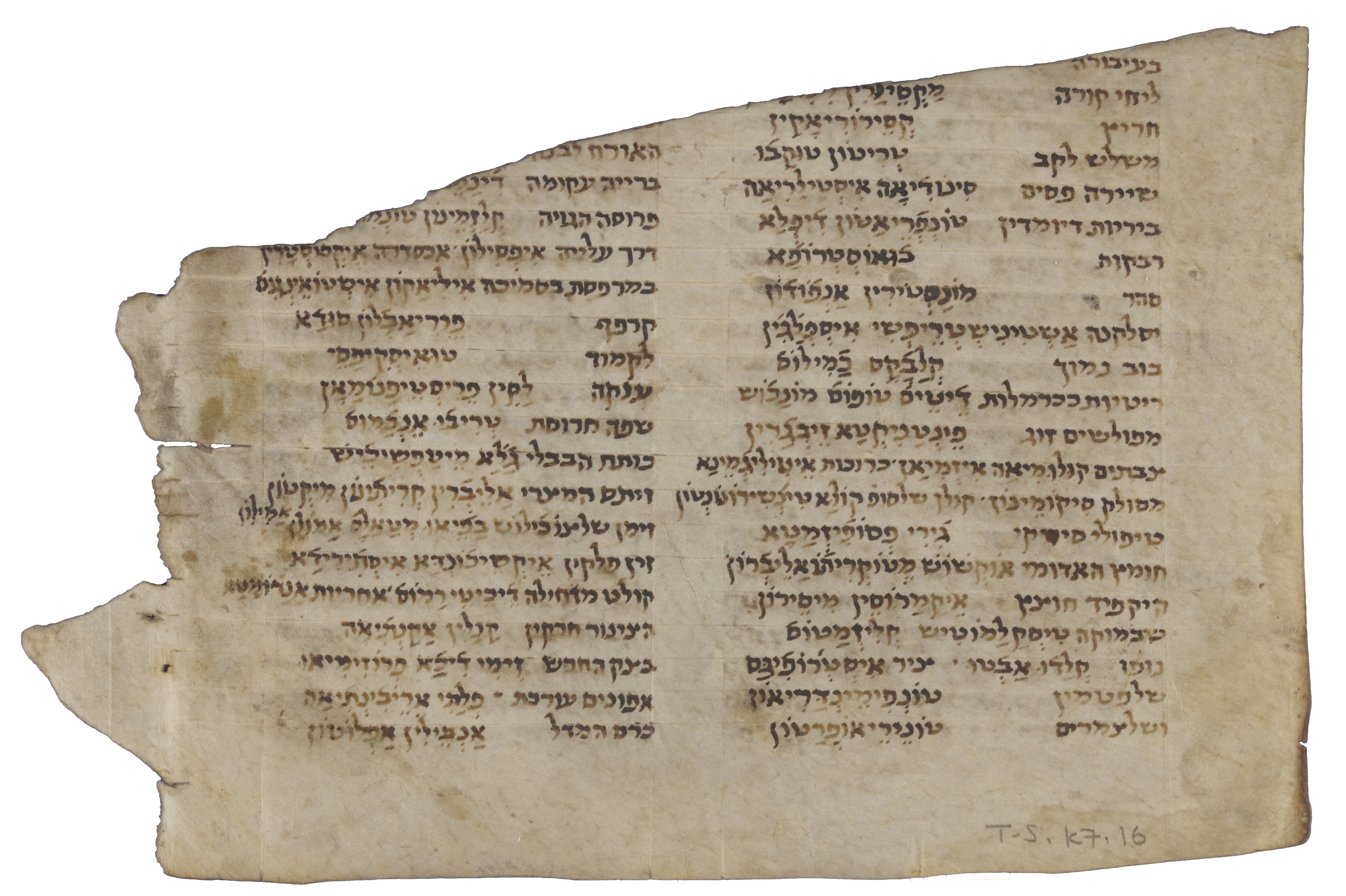
Julia, what are you working on today?
I’m re-examining T-S K7.16 – it’s a manuscript that I worked on a long time ago. It’s a long glossary with more than a hundred glosses. It was published by Nicholas de Lange and republished subsequently, but there’s more to say about it. My current draft of this...
Read More...Has tags: Genizah Fragments, glossary, Greek, language, Mishnah, Q&A
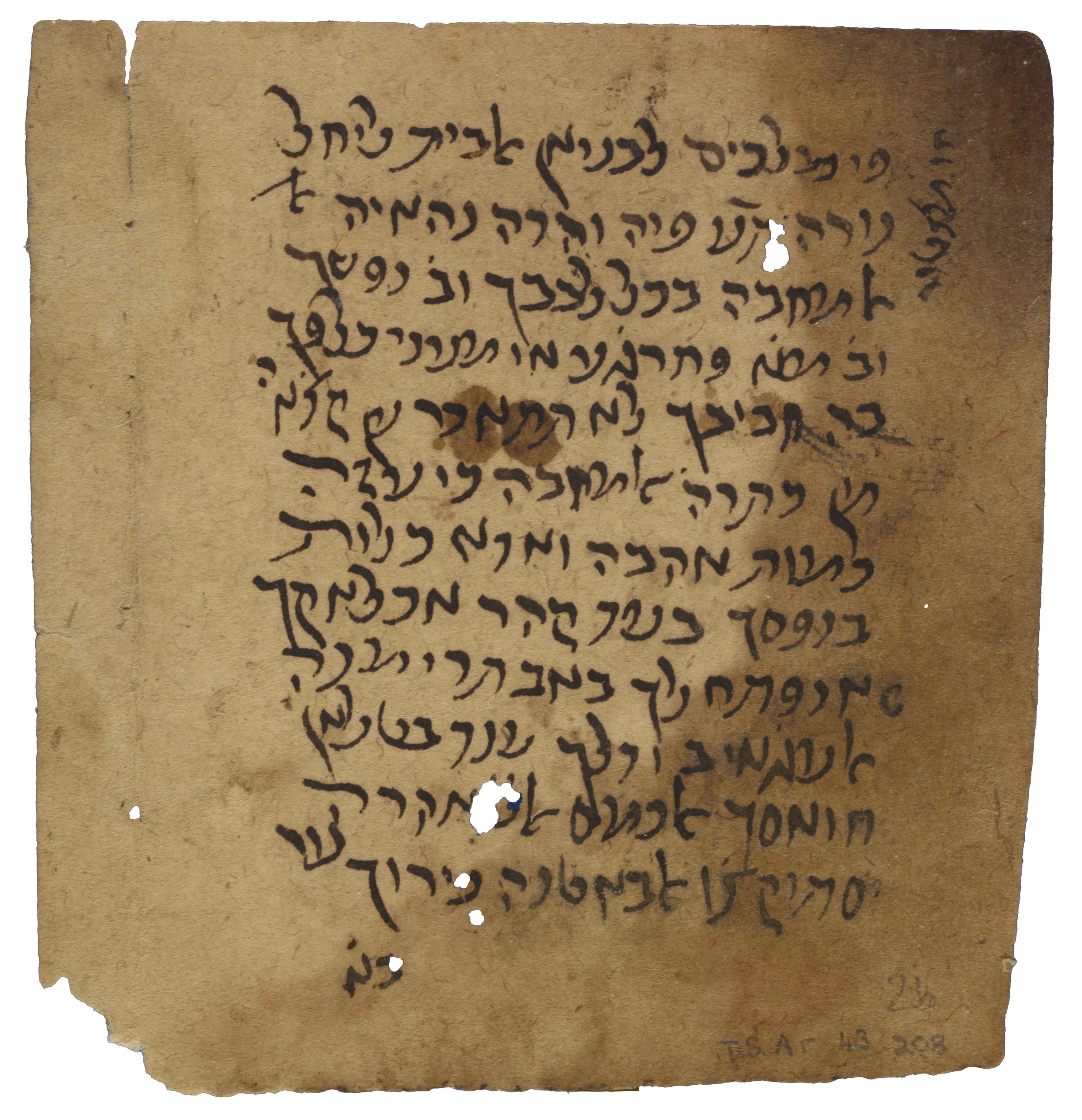
Our Throwback Thursday this week is taken from issue 4 of the printed edition of Genizah Fragments, published in October 1982:
The Genizah has proved to be a mine of biographical information about the scholars of mediaeval Egypt, especially of the Maimonides family who were leaders of Egyptian Jewry for over 200 years. Indeed, communal and literary documents have come to light which testify to the sustained intellectual activity of Oriental Jewry’s most illustrious family. Dr Paul Fenton,... Read More...Has tags: Abraham Maimonides, Genizah Fragments, Moses Maimonides, mystical, Sufism
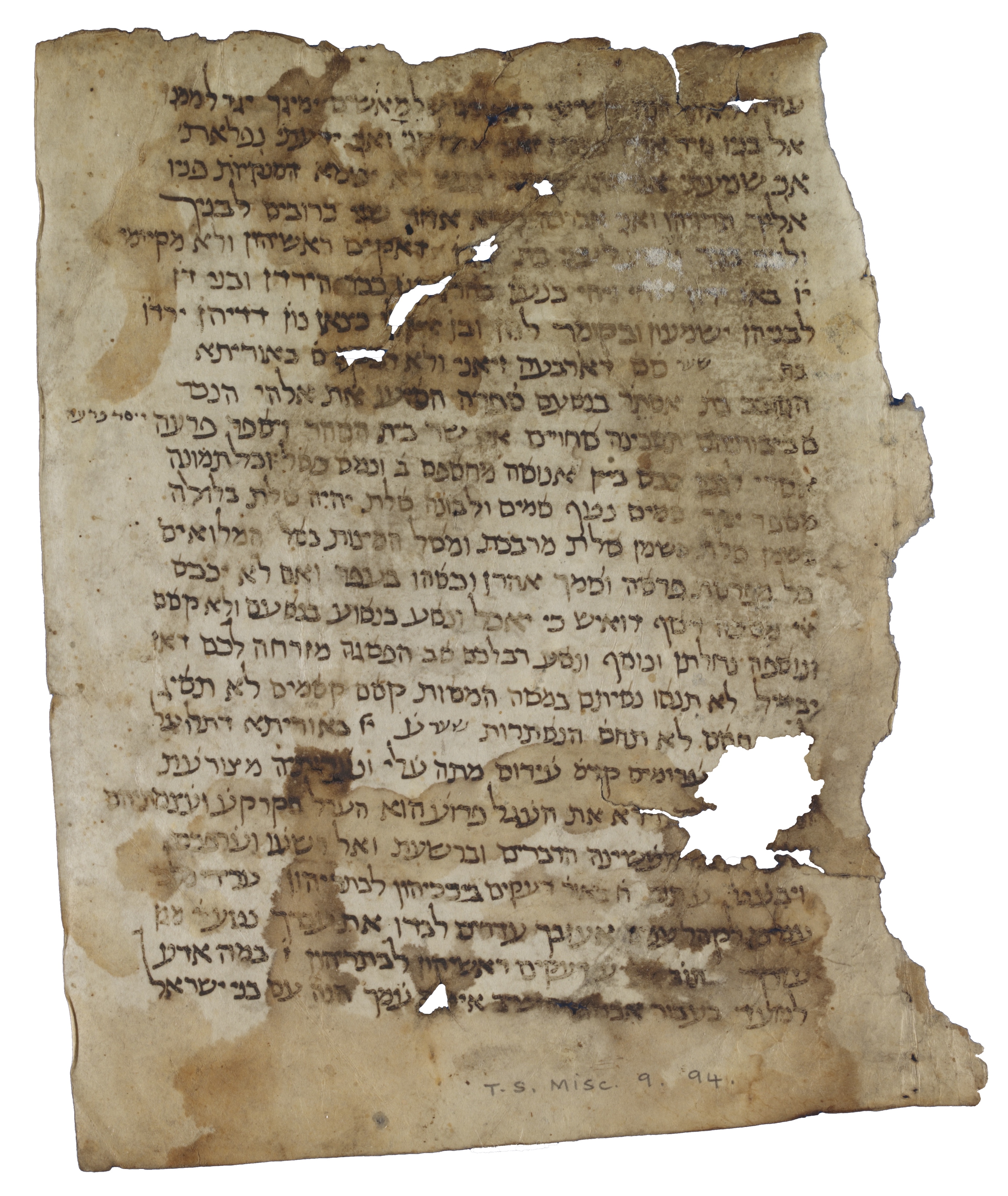
Marc, what are you working on today?
Today I'm actually writing a couple of gittin (divorce documents), but I'm also working on two articles, one specifically related to my PhD (on Sefer Tagin) and one looking at special scribal practices in Megillat Esther. The first article deals with transmission of the text, and includes a new Genizah fragment that is a further part of the fragments I covered in my recent book Sefer Tagin Fragments from the Cairo Genizah A Critical Edition,...
Read More...Has tags: Genizah Fragments, palaeography, Q&A, scribe
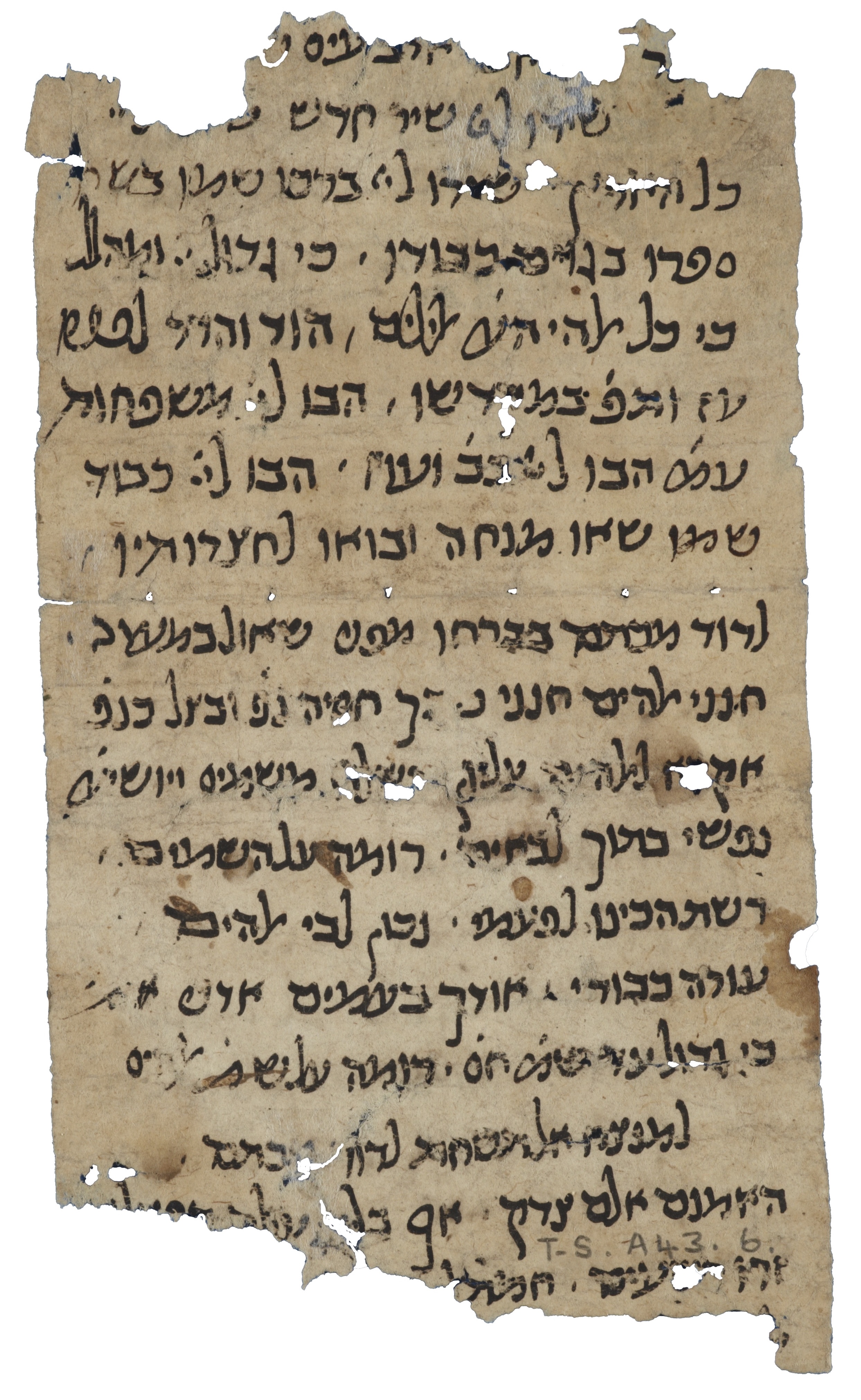
Kim, what are you working on today?
I’m working on T-S A43.6, and its associated fragments. They are a Shorthand Bible, or a Psalter, to be more precise.
A Shorthand Bible – is this the same as a Serugin manuscript?
Sort of. For the past too-long I’ve been looking at the different ways the mediaeval Jewish community in Fustat produced Bibles (or parts of Bibles) written in abbreviated form. It turns out there are three basic ways they did it: sometimes they just wrote the initial word, or few words, of a given verse, then the same for...
Read More...Has tags: Bible, codex, Genizah Fragments, Q&A, serugin
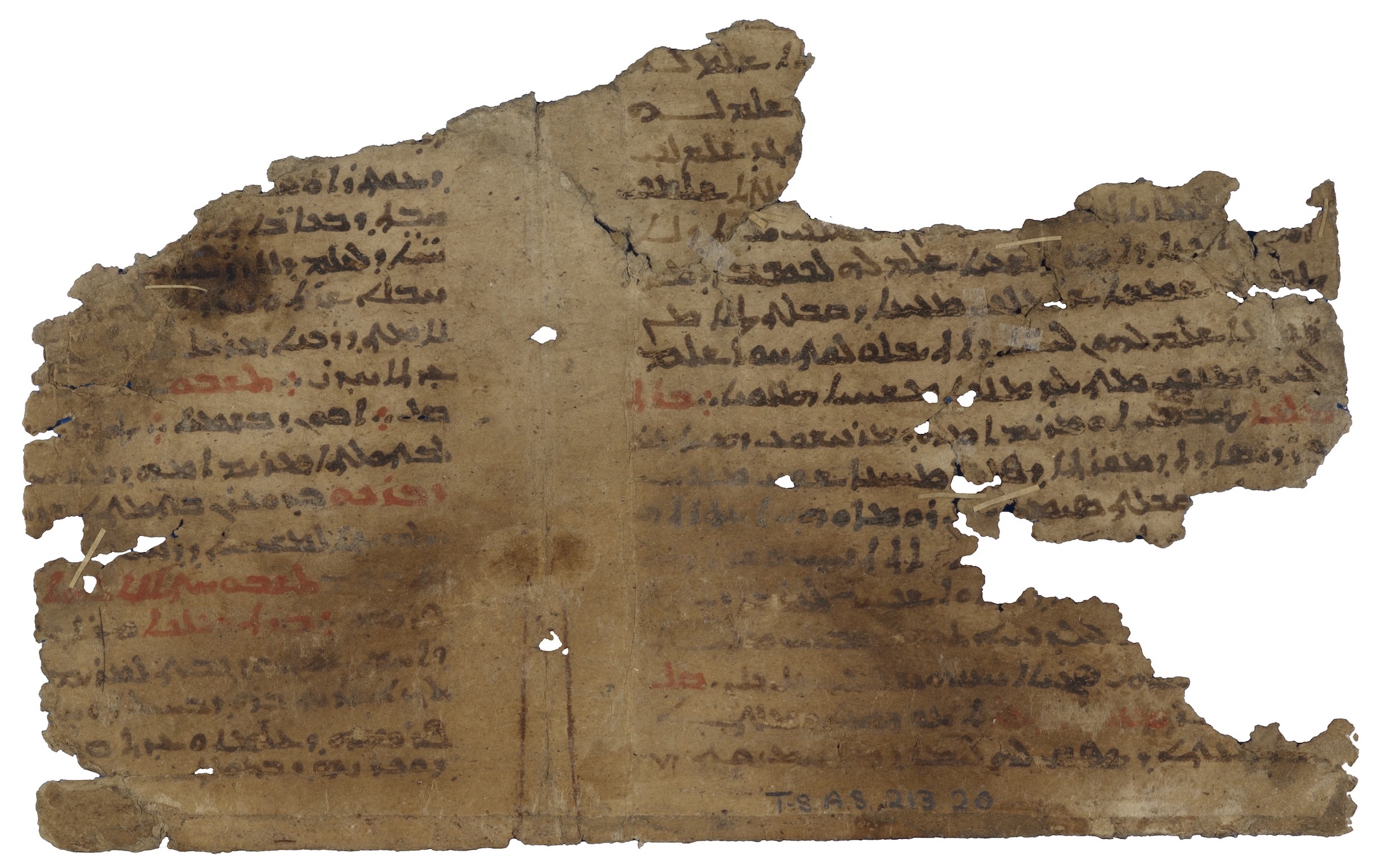
Our Throwback Thursday this week is taken from issue 6 of the printed edition of Genizah Fragments, published in October 1983, by Sebastian Brock:
That the Taylor-Schechter Genizah Collection contains a smattering of Christian texts has long been known. Written mainly in Christian Palestinian Aramaic but also in Coptic, Georgian, Greek, Latin and Syriac, these are all to be found in manuscripts technically known as palimpsests. Such manuscripts consist of parchment leaves whose original writing (in this case... Read More...Has tags: Christian, Genizah Fragments, Syriac
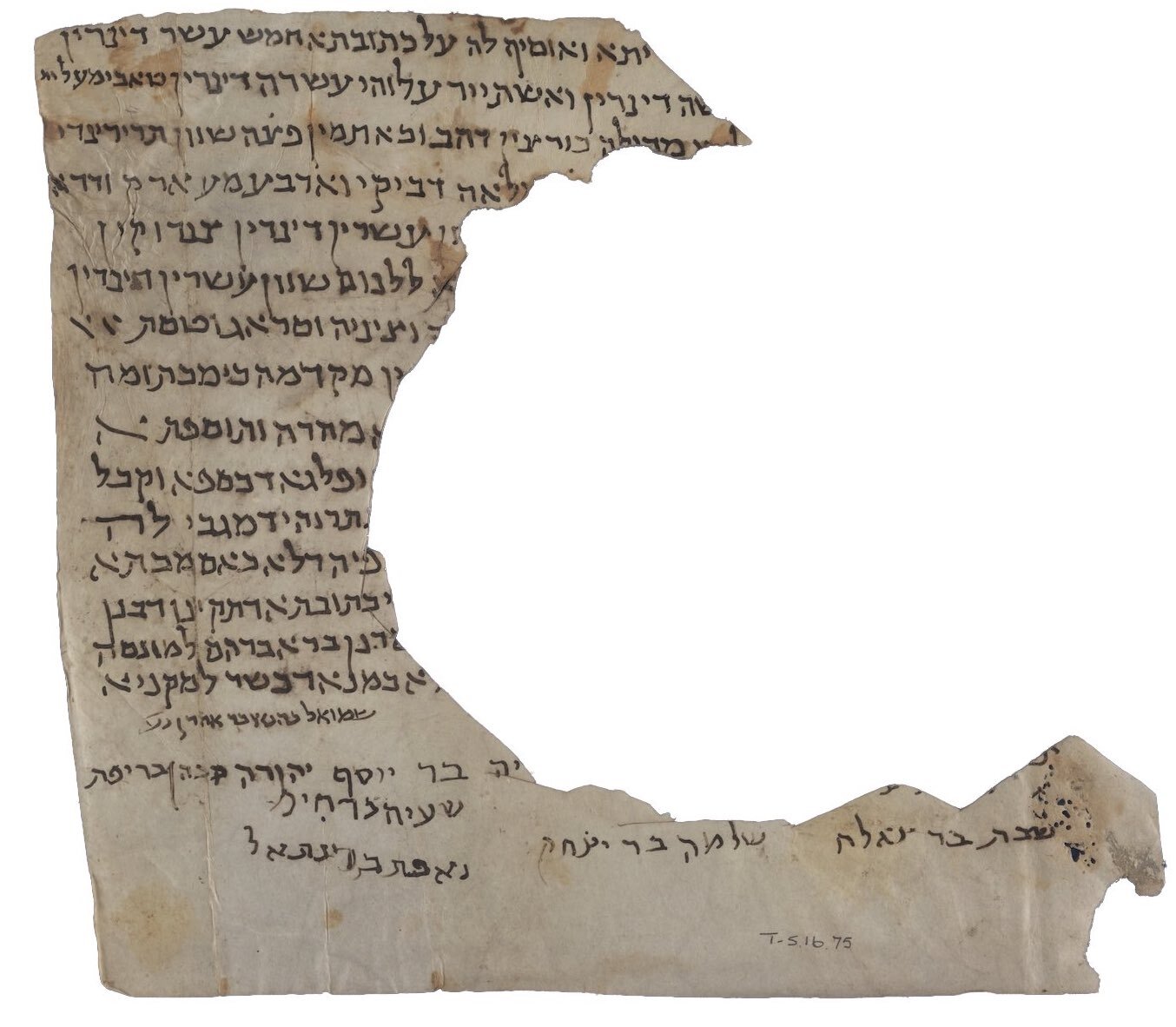
Zina, you have a new book coming out soon about inks in Genizah manuscripts. How did your interest in the fragments come about?
I have a Masters in archaeology, but have always been interested in science. I came to be interested in archaeometry – science applied to archaeology. During my Masters degree I worked on an Islamic complex in Morocco dating to the 14th century, analysing the mortar to try to understand if there were strategies involved in preparing the mortar. My main subject of interest, though, was manuscripts and pigments, and I planned to continue my...
Read More...Has tags: Genizah Fragments, ink, ketubba, Moses Maimonides, paper, Q&A, scribe
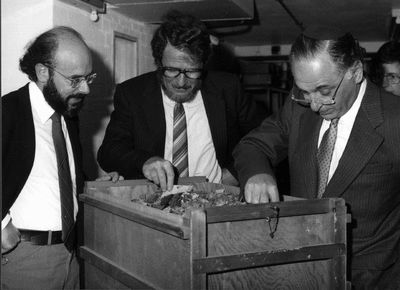
Our Throwback Thursday this week is taken from issue 28 of the printed edition of Genizah Fragments, published in October 1994, by J.D. Pearson, Emeritus Professor of Bibliography at the University of London. He recalls his days as a young man in Cambridge, fetching manuscripts, encountering Genizah researchers, and battling the smells of the fragments:
Having joined the Library staff as a “boy” (today called an assistant) in 1928, at the age of sixteen, I became acquainted with the documents...
Read More...Has tags: conservation, Genizah Fragments
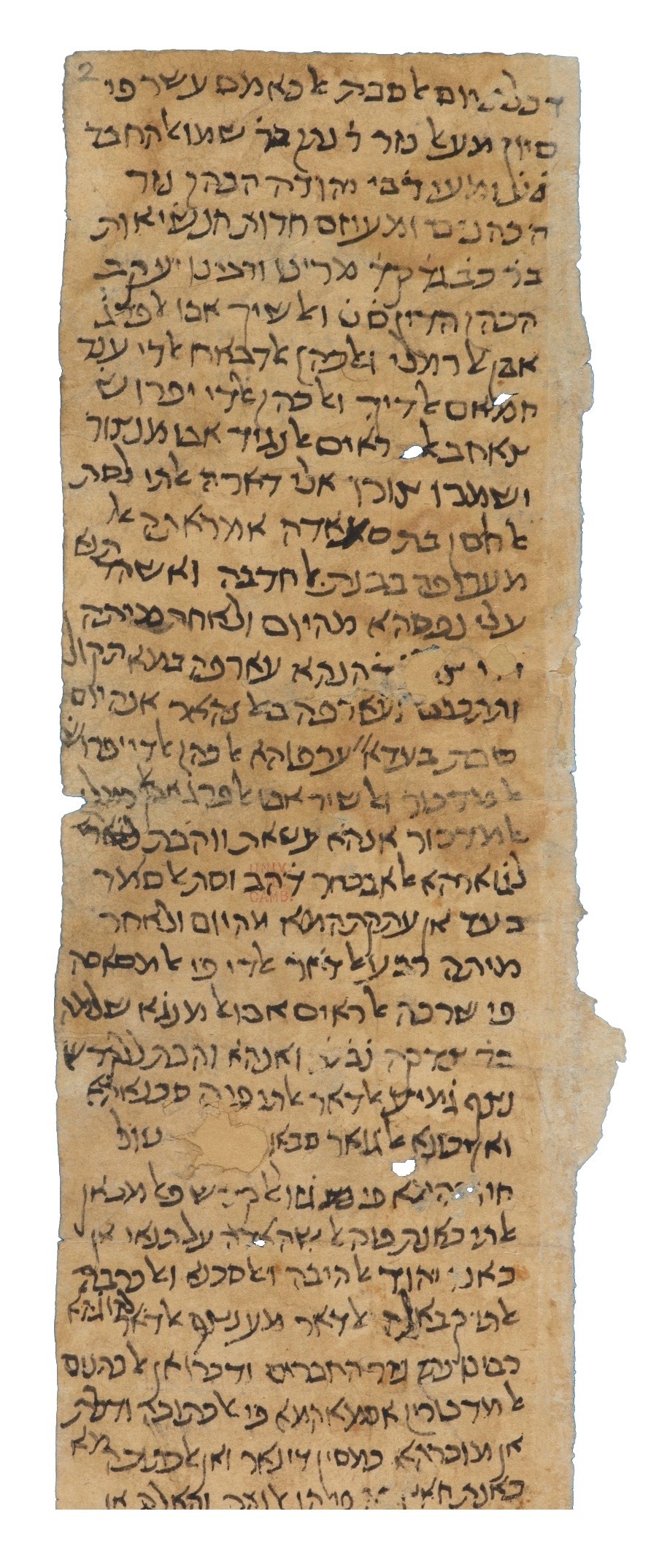
Hi Craig – what are you working on at the moment?
Next week (12 August) is the UK publication date for volume 2 of the Cambridge World History of Slavery of which I am co-editor and contributing author. I wrote chapters on slavery and the slave trade in the western...
Read More...Has tags: Abraham Maimonides, Genizah Fragments, Ibn Yiju, legal, Mordechai Akiva Friedman, Moses Maimonides, Q&A, responsa, slave
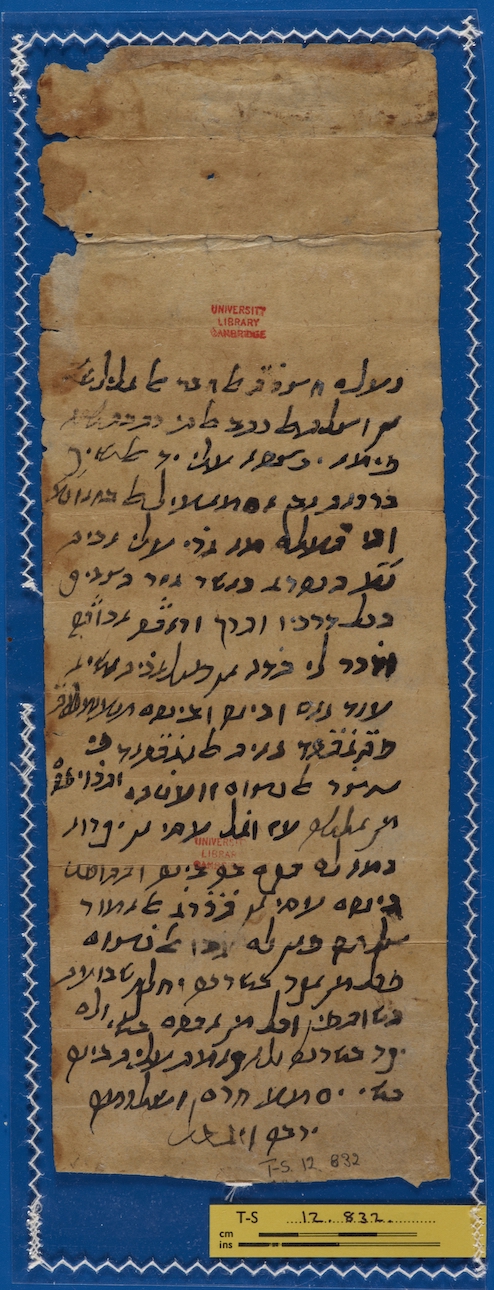
Our Throwback Thursday this week is taken from issue 16 of the printed edition of Genizah Fragments, published in October 1988, by Joel Kraemer:
The importance of the Cambridge Genizah for the study of Maimonides manuscripts is widely acclaimed. Not long ago, Dr David Goldstein (of blessed memory) delivered a lecture at Cambridge on these manuscripts (see Genizah Fragments 11, April, 1986).
The survival of a...
Read More...Has tags: Genizah Fragments, ink, Moses Maimonides, responsa
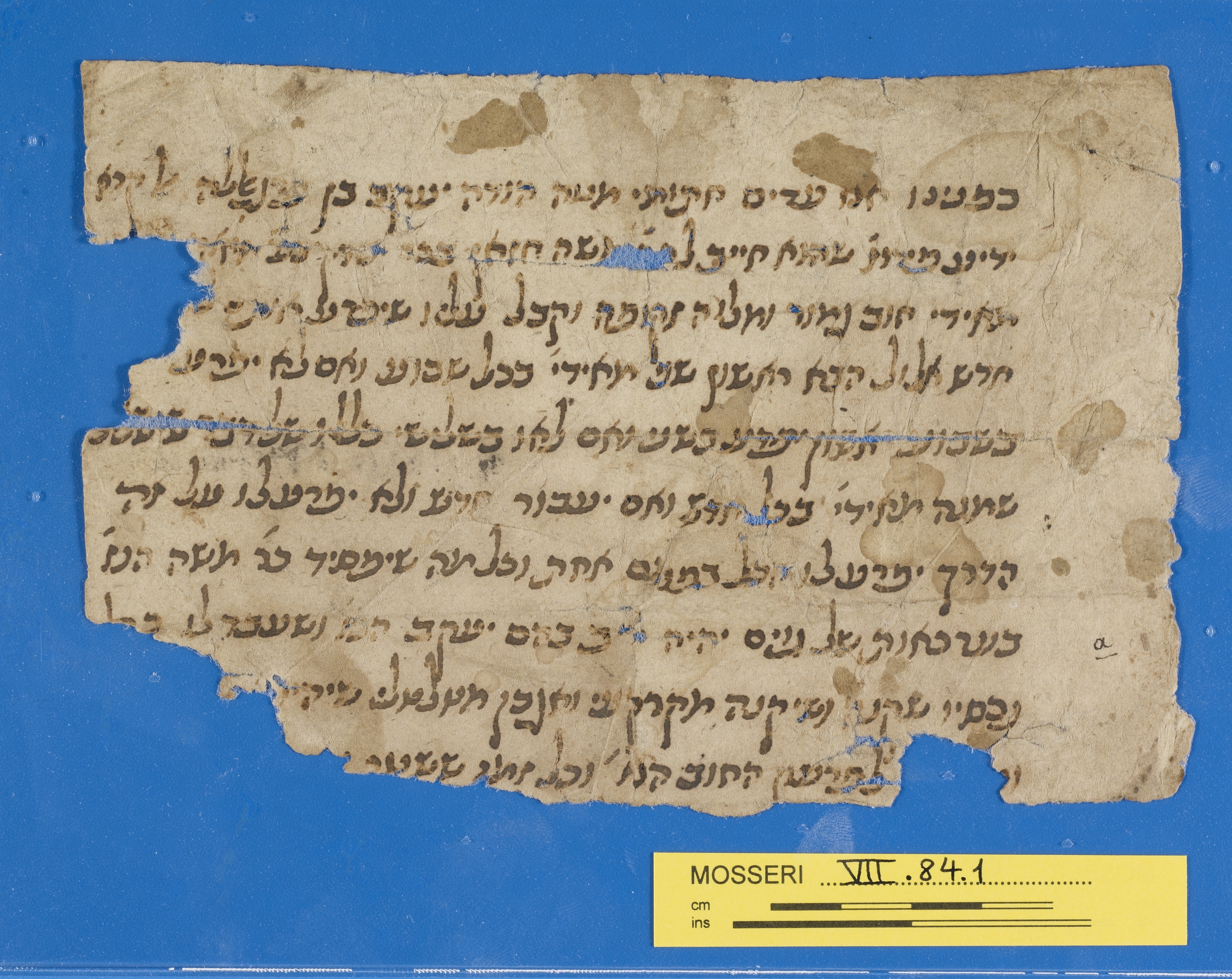
Dotan, what are you working on at the moment?
I’m working on a group of documents, mainly in Judaeo-Arabic, related to the relations between Karaites and Rabbanites in the Ottoman period, especially in Cairo and Jerusalem. Most of the documents are part of the Firkovich collection, such as Evr. Ar. II 1143, Evr. Ar. II 1408, Evr. Ar. II 1458 and more, but a few of them belong to other collections. For example, Mosseri VII.84.1, a torn loan deed, written in the 16th century, which testifies that a Karaite borrower, Jacob ibn Farjallah, owed money to a Rabbanite...
Read More...Has tags: debt, Firkovich, Genizah Fragments, Karaite, marriage, Ottoman, Q&A, Rabbanite, responsa
